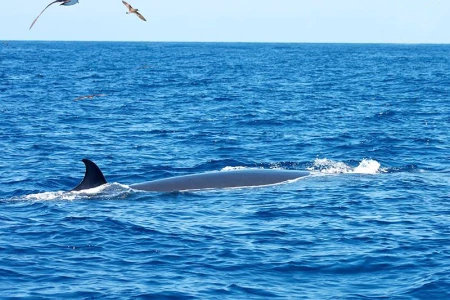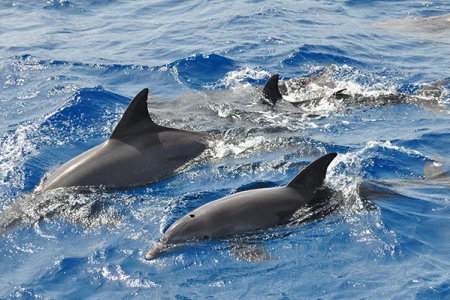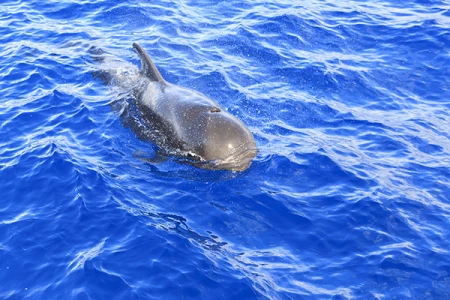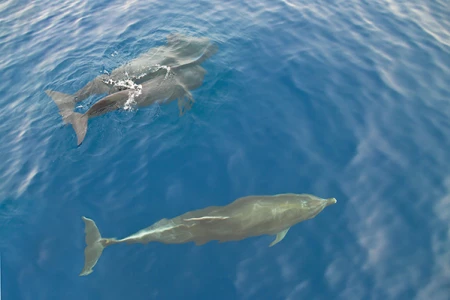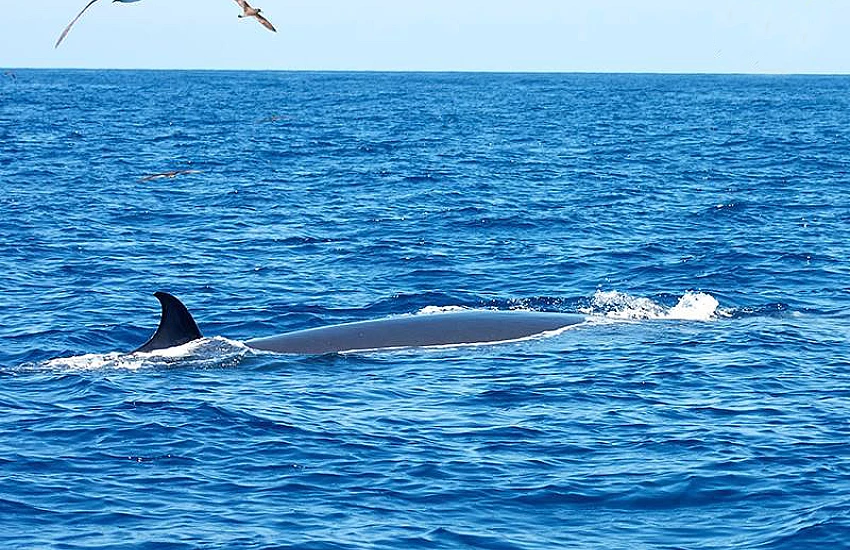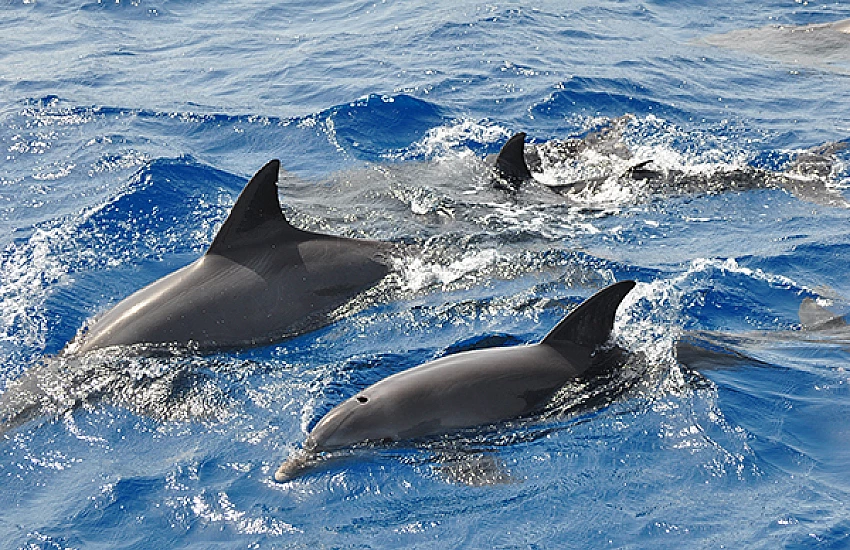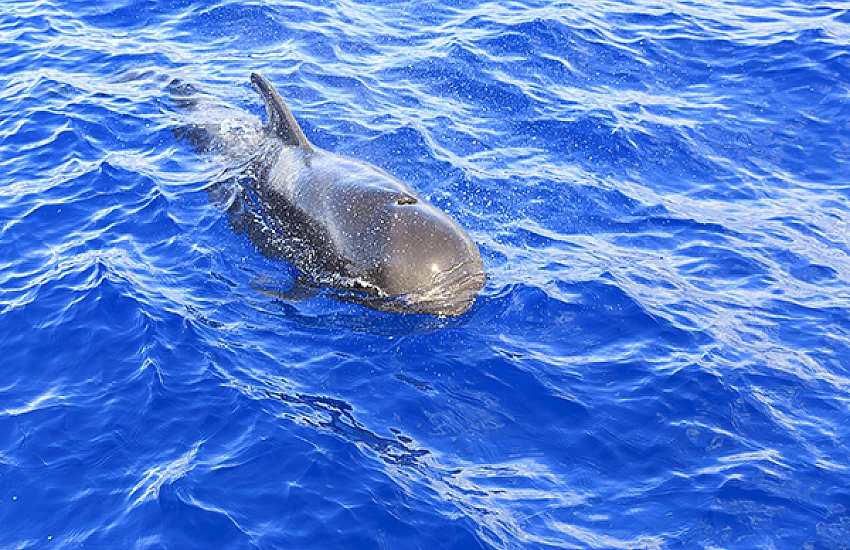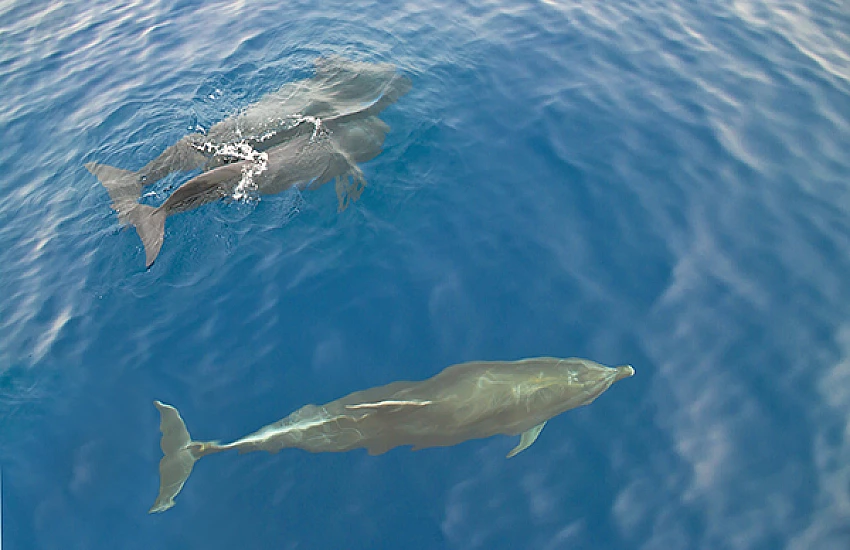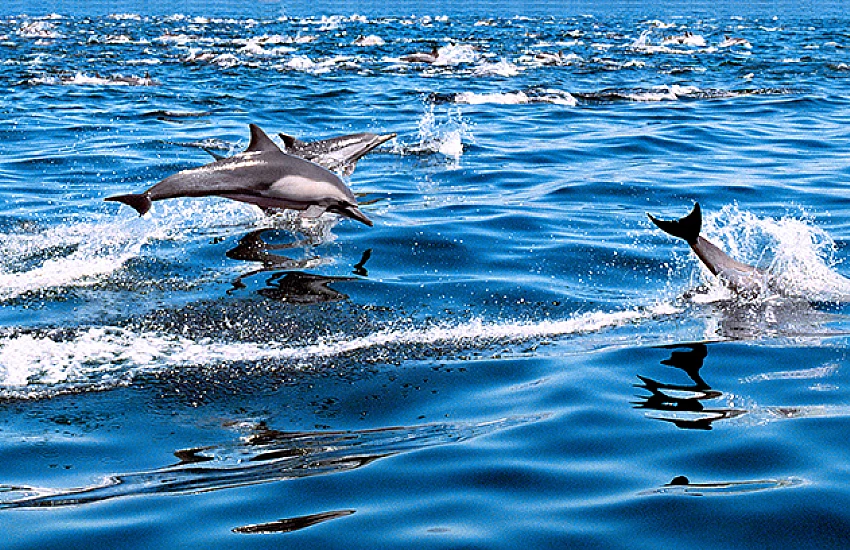
Spis treści
Gran Canaria, one of Spain’s Canary Islands, is a haven for marine life enthusiasts, offering an unparalleled opportunity to witness dolphins and whales in their natural habitat. Understanding the best season for dolphin and whale watching can significantly enhance your experience. While these magnificent creatures can be spotted year-round due to the island's temperate climate, certain periods offer more fruitful sightings.
The prime season for dolphin and whale watching in Gran Canaria typically spans from April to October. During these months, the Atlantic Ocean surrounding the island is teeming with activity as various species migrate through or settle temporarily in its nutrient-rich waters. The warmer sea temperatures and calmer weather conditions create an ideal environment for marine mammals, making it easier to spot them on excursions.
Spring marks the beginning of this peak period. In April and May, you are likely to encounter playful pods of dolphins such as bottlenose and common dolphins that frolic near the surface. These months also see pilot whales frequently visiting the waters around Gran Canaria.
As summer progresses into June through August, sightings become even more diverse. The calm seas attract larger species like sperm whales and Bryde’s whales. The serene oceanic conditions during these months not only improve visibility but also provide a smoother boat ride for observers.
Autumn extends this favorable window into September and October when migratory patterns bring different species closer to shore before they continue their journey.
While winter months might witness fewer sightings compared to the peak season, Gran Canaria’s relatively stable weather ensures that dolphin and whale watching remains a viable activity year-round. However, timing your visit between spring and early autumn maximizes your chances of experiencing these majestic marine creatures up close in their natural splendor.
Top 5 Locations For Whale And Dolphin Watching Around The Island
Gran Canaria, with its rich marine biodiversity and stunning coastal landscapes, offers some of the best spots for whale and dolphin watching. Each location around the island promises a unique experience, whether you're seeking the thrill of spotting playful dolphins or hoping to witness the grandeur of majestic whales.
One prime location is Puerto Rico in the south-western part of Gran Canaria. This bustling port is renowned for its variety of boat tours that cater specifically to dolphin and whale watching enthusiasts. The calm waters here provide an excellent environment for these marine mammals, making sightings quite common.
Another notable spot is Puerto de Mogán. Often referred to as "Little Venice" due to its charming canals, this picturesque fishing village also serves as a gateway to incredible marine adventures. The deep waters off its coast are frequented by various species of dolphins and whales, offering visitors ample opportunities for memorable encounters.
In the north-east lies Las Palmas de Gran Canaria, the island's capital. While better known for its urban attractions, it also offers access to remarkable whale and dolphin watching tours. The proximity to deeper Atlantic waters means that visitors have a good chance of encountering larger species like pilot whales.
Moving towards the north-western tip, Agaete provides another excellent vantage point for marine life observation. The rugged coastline here meets deep oceanic waters quickly, creating an ideal habitat for both resident and migratory cetaceans.
Lastly, Arguineguín in the south offers a more laid-back but equally rewarding experience. This small fishing village boasts several dedicated tour operators who know just where to find pods of dolphins frolicking in their natural habitat.
Each location around Gran Canaria presents its own unique charm and opportunities for unforgettable encounters with some of nature’s most magnificent creatures. Whether you're an avid wildlife enthusiast or simply looking to add some excitement to your vacation, these spots promise a thrilling adventure on every outing.
Choosing The Right Tour: Tips And Considerations For The Best Experience
Choosing the right tour for your dolphin and whale watching adventure in Gran Canaria can significantly enhance your experience, turning a simple outing into an unforgettable memory. When selecting a tour, consider several factors to ensure you make the most of your time on the water.
First, research the reputation of various tour operators. Look for companies with strong reviews and testimonials that highlight their commitment to safety, customer satisfaction, and environmental responsibility. Operators who prioritize sustainable practices are not only helping to preserve marine life but often provide more insightful and respectful encounters with these magnificent creatures.
Timing is another crucial element. Different species of dolphins and whales frequent Gran Canaria’s waters at various times of the year. By understanding seasonal patterns, you can increase your chances of witnessing specific types of marine life. Morning tours often provide calmer seas and better visibility, while afternoon trips might offer a different perspective as sunlight changes.
Group size can also impact your experience. Smaller groups tend to offer a more personalized adventure with greater opportunities for interaction with guides who possess in-depth knowledge about marine biology and local ecosystems. Such tours often result in less disturbance to wildlife compared to larger groups.
Additionally, consider the duration of the tour. Shorter excursions might be ideal if you’re looking for a brief encounter or are pressed for time, whereas longer trips allow for deeper exploration into remote areas where marine life is abundant.
Lastly, don't overlook onboard amenities such as comfortable seating, shade from the sun, refreshments, and knowledgeable crew members who can enrich your journey with fascinating insights about dolphin and whale behavior.
By thoughtfully considering these aspects—operator reputation, timing, group size, tour duration—you can select a dolphin and whale watching adventure that maximizes enjoyment while fostering a deeper appreciation for Gran Canaria's vibrant marine life.
What To Bring: Essentials For Your Dolphin And Whale Watching Adventure
When embarking on a dolphin and whale watching adventure in Gran Canaria, preparation is key to ensuring an enjoyable and memorable experience. First and foremost, comfort is paramount. Opt for lightweight, breathable clothing suitable for the typically warm Canary climate. A wide-brimmed hat or a cap can offer much-needed shade from the sun, while a light jacket or windbreaker is advisable as it can get breezy out on the open ocean.
Sun protection cannot be overstated. High SPF sunscreen is essential to shield your skin from intense UV rays that reflect off the water's surface. Sunglasses with polarized lenses will protect your eyes from glare and enhance visibility, allowing you to spot marine life more easily.
Footwear should be both practical and comfortable – think non-slip shoes or sandals that are easy to move around in on a boat’s sometimes slippery deck. Speaking of mobility, don’t forget your camera or smartphone with ample storage space; capturing these incredible moments will help you cherish them long after the trip has ended.
Hydration is crucial under the sun’s relentless gaze, so bring along plenty of water in reusable bottles. Snacks can also be a good idea; choose non-perishable items like nuts or dried fruit that provide quick energy without creating mess.
Binoculars can greatly enhance your experience by bringing distant sightings into clear view. While many tour operators provide them, having your own ensures you won’t miss any action.
Lastly, consider motion sickness remedies if you're prone to seasickness—natural options like ginger tablets or acupressure wristbands work well without causing drowsiness.
By paying attention to these details and preparing accordingly, you'll be set to fully immerse yourself in the awe-inspiring spectacle of dolphin and whale watching in Gran Canaria.
Conservation Efforts: Protecting Marine Life In Gran Canaria
Gran Canaria, with its crystal-clear waters and abundant marine life, is a prime destination for dolphin and whale watching. However, the island’s commitment to preserving this vibrant ecosystem is just as impressive as the adventures it offers. Conservation efforts in Gran Canaria are multifaceted, combining scientific research, community engagement, and strict regulations to protect marine life.
At the heart of these efforts is a deep understanding of the delicate balance within marine ecosystems. Local organizations collaborate with international researchers to monitor populations of cetaceans—dolphins and whales—and study their behaviors and habitats. This research is crucial in identifying areas that require protection and understanding how human activities impact these majestic creatures.
One significant aspect of conservation in Gran Canaria involves stringent regulations on whale-watching tours. Operators must adhere to guidelines designed to minimize stress on marine animals. Boats are required to maintain a safe distance from cetaceans, avoid high speeds that can disturb them, and limit the duration of close encounters. These measures ensure that while tourists can enjoy observing dolphins and whales in their natural environment, the animals' well-being remains a priority.
Community involvement also plays a vital role in conservation efforts. Educational programs aimed at both locals and visitors raise awareness about the importance of protecting marine ecosystems. Beach clean-ups, sustainable fishing practices workshops, and school outreach programs help foster a culture of respect for marine life.
Moreover, protected areas around Gran Canaria serve as sanctuaries where marine species can thrive without human interference. These zones are off-limits to fishing and other potentially harmful activities, providing safe havens for dolphins, whales, and other sea creatures.
Through a combination of rigorous scientific research, responsible tourism practices, community education initiatives, and designated protected areas, Gran Canaria exemplifies how dedicated conservation efforts can coexist with eco-tourism adventures—ensuring that future generations will continue to experience the thrill of its rich marine life.






